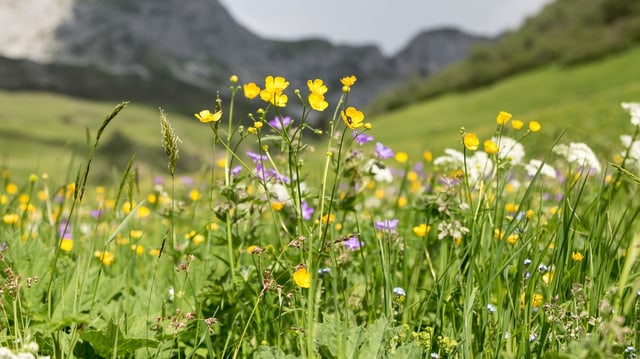Contents
A third of all plant and animal species are endangered. The federal government wants to continue fighting against this development.
The situation of animal, plant and fungal diversity in Switzerland has not improved in the last decade despite measures. That is the conclusion of two studies by the Federal Office for the Environment (Bafu). It is the first evaluation of all Red Lists of endangered species in Switzerland for ten years.
“The reports show developments that should give us cause for concern,” Bafu Director Katrin Schneeberger told the media on International Biodiversity Day. According to the reports, the situation has worsened for fish, reptiles, birds and vascular plants such as ferns.
Compared to neighboring countries, the proportion of endangered or extinct species in Switzerland is particularly high. Of the species that only or mostly occur in Switzerland, almost half are on the Red List.
Biodiversity: by no means a luxury
“Biodiversity is not just a luxury. On the contrary: it affects us all directly, »emphasized Schneeberger. If biodiversity is bad, our livelihood is threatened.
For example, it is not possible to farm without pollinating insects. Biodiversity is also one of the most important sources of new active ingredients from which medicines are made.
Biodiversity affects us all directly.
In addition, rich biodiversity increases the chance that nature can adapt to extreme events such as drought or heat stress. Biodiversity is a kind of insurance.
The protagonists of the loss of biodiversity are not only the well-known species such as lynx and bearded vulture, but often also species that hardly anyone knows, emphasized Bafu Vice Director Franziska Schwarz.
Less ecologically valuable areas
In addition to the increase in endangered species, the reports show that the area, quality and connectivity of ecologically valuable habitats has declined sharply since 1900. In many cases, only residual areas are left. The Mittelland is particularly affected.
“Space in Switzerland is scarce and has become increasingly scarce in recent years,” says SRF domestic editor Ralph Heiniger. For this reason, the areas for ecologically valuable habitats have continued to decrease.
Individual Achievements
After all, Switzerland took measures years ago and, according to Schwarz, has achieved a lot. The risk situation for dragonflies and amphibians has improved.
Certain species have benefited from habitats being revitalized, upgraded or newly created.
“Apparently, certain species have benefited from the fact that many habitats suitable for them have been revitalized, upgraded or newly created in recent years,” said the Bafu Deputy Director. The studies conclude that the situation in the forests has also improved in general.
Conservationists criticize politics
The environmental organization Pro Natura calls for an increase in measures to preserve biodiversity. With an action on the Bundesplatz in Bern, Pro Natura warned of a gigantic domino effect caused by the loss of animal, plant and fungal species on International Biodiversity Day.

Legend:
Onlookers watch the Pro Natura campaign on Bundesplatz.
Keystone/Peter Klaunzer
She criticized the measures taken by Swiss politicians to combat the biodiversity crisis as inadequate.
In a statement, the Swiss Farmers’ Association emphasized the importance of biodiversity. Agriculture goes to great lengths to do its homework on promoting biological diversity.
